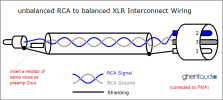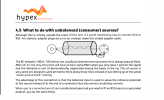WhoaNotWoah
Member
- Joined
- Jul 13, 2024
- Messages
- 5
- Likes
- 0
And if so, is there anything "less" balanced about such a cable than a mini-XLR to XLR cable?
I'm asking in the context of Pro-Ject turntables, as I decide between two different models, one with and one without a mini-XLR output.
Finally, if such a cable is possible, is there anything I specifically need to ask for from a custom cable maker to ensure that it's a balanced cable and not simply a common unbalanced RCA to XLR cable? And I have the same question for a custom mini-XLR to XLR cable, I suppose, in the event that I'm ordering one of those instead.
I'm asking in the context of Pro-Ject turntables, as I decide between two different models, one with and one without a mini-XLR output.
Finally, if such a cable is possible, is there anything I specifically need to ask for from a custom cable maker to ensure that it's a balanced cable and not simply a common unbalanced RCA to XLR cable? And I have the same question for a custom mini-XLR to XLR cable, I suppose, in the event that I'm ordering one of those instead.



